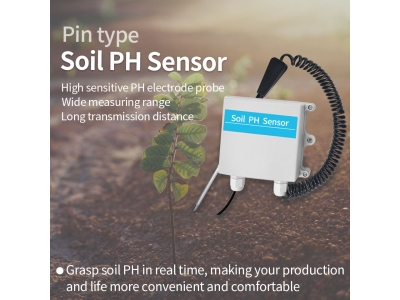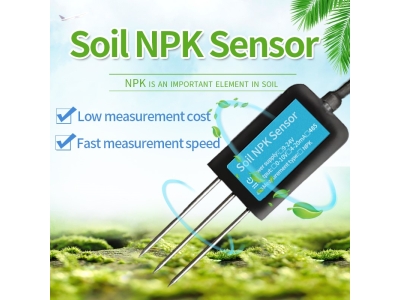In the modern era of agriculture, data-driven farming has become the key to achieving sustainable and efficient crop production. Leveraging soil sensors in this process can unearth valuable insights into soil health, crop growth, and environmental factors, leading to improved decision-making and increased productivity. In this article, we will explore the role of soil sensors in data-driven farming and how they can contribute to unearthing insights that drive better crop management practices.

Soil sensors provide farmers with real-time data on soil properties such as pH, moisture, temperature, and nutrient availability. This information is crucial for understanding soil health and crop growth, as it allows farmers to identify potential problems and take appropriate measures to address them. By using soil sensors, farmers can monitor soil conditions over time and across different fields, providing a more comprehensive understanding of their crop production system.
Data-driven farming involves the use of advanced technologies and analytics to make informed decisions about crop management. Soil sensors provide farmers with a wealth of data that can be used to analyze soil fertility, water use, and crop growth patterns. This data can be combined with other sources of information, such as weather forecasts and satellite imagery, to create a comprehensive picture of the crop production system.
By analyzing this data, farmers can identify optimal growing conditions and make informed decisions about fertilizer application, irrigation scheduling, and crop rotation. They can also identify areas where soil fertility or water availability is low and take steps to improve it. This level of precision and insight allows farmers to optimize their resources, reduce waste, and increase yields while maintaining a sustainable approach to agriculture.
Soil sensors also contribute to environmental stewardship by helping farmers manage their water resources more effectively. By monitoring soil moisture levels, farmers can determine the optimal time for irrigation, reducing water wastage and ensuring that plants receive adequate water without drying out the soil. This practice not only conserves water but also reduces the environmental impact of agriculture by reducing nutrient runoff and erosion.
Furthermore, soil sensors can help farmers detect diseases and pest infestations early on. By monitoring soil health and crop growth, farmers can identify potential problems and take proactive measures to address them before they become widespread. This early detection and intervention can help reduce yield losses and protect the health of the crop, ensuring a sustainable supply of high-quality produce.
In conclusion, soil sensors play a crucial role in unearthing insights for data-driven farming. By providing real-time data on soil properties and crop growth, soil sensors enable farmers to make informed decisions about crop management practices. This level of precision and insight allows farmers to optimize their resources, reduce waste, and increase yields while maintaining a sustainable approach to agriculture. As technology continues to advance, we can expect even more innovative solutions from soil sensors that will further enhance data-driven farming practices in the future.






